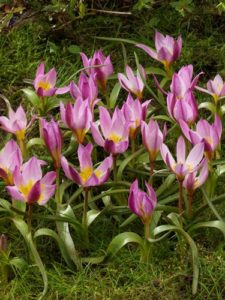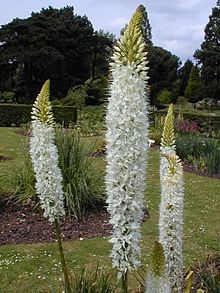October 2018
By Scott Canning, Horticulture and Special Projects Director
To repeat from last month: Your continued work in the garden will pay future dividends. Remember that terrifying adage: “One year to seed; seven years to weed!”
At this late point in the season, you can save yourself some effort by simply removing the flowers and seed heads from the weeds; there is little chance the weeds will have the time left to mount another attempt to flower and set seed. This applies to annual weeds, you must remove perennial weeds completely, of course. Remember to trash this debris, don’t throw it into your compost pile unless you are an expert composter who can maintain your “pile” hot enough to destroy weed seeds.

Tulipa humilis
If you attended our recent plant sale, I hope you planted right away, and watered the newbies in very well. Roots can continue to grow as long as soil temperatures are above about 45F. Remember that anything newly planted has a limited extent of roots and has less drought resistance than plants that are fully “rooted in.” This means some watering this winter if it is dry: Water deeply once every three weeks or so, and let how warm and dry the winter is be your guide.
It’s time to plant fall-planted bulbs for spring bloom. These bulbs will be growing roots this fall, before going dormant, and again in the spring. Give them a good start by watering them in after planting to settle soil against the base of the bulbs where the roots emerge— you don’t want an air pocket there. If you are not acquainted with “species” or “botanical” tulips, you are in for a treat. There are some tulips that hail from the steppes of Eurasia that are well-suited to our climate. These are highly recommended, but not commonly found—try bulb specialists like Brent & Becky’s Bulbs or Van Engelen (wholesale quantities) or John Scheepers (same inventory as Van Engelen but retail quantities). Some species tulips to try include Tulipa clusiana and any of its forms, Tulipa humilis (it also has many variants) T. orphanidea, T. tarda, and T. turkestanica. These tulips are not the tall, stately garden varieties, but have more “wildflower” appeal, great for the rock garden, scree, or frontside of a native planting. They come from harsh, rocky often alkaline conditions and can even naturalize here. Try to keep them away from summer irrigation, and plant them deeply: 6-8 times as deep as the bulb is tall. Some are very affordable, and planting in “drifts” is very effective.

Eremerus himalaicus
Another “steppe” bulb grown to fantastic effect at the Denver Botanic Garden is the foxtail lily, Eremerus. These are tall, striking late-spring bloomers. There are color selections available, mostly from Eremerus robustus and Eremerus stenophyllus (syn. E. bungei). A striking snow-white species, Eremerus himalaicus, tends to be more reliably perennial than others, in my experience. Give them a try, and remember to handle the octopus-like perennial roots carefully because they are very brittle.


